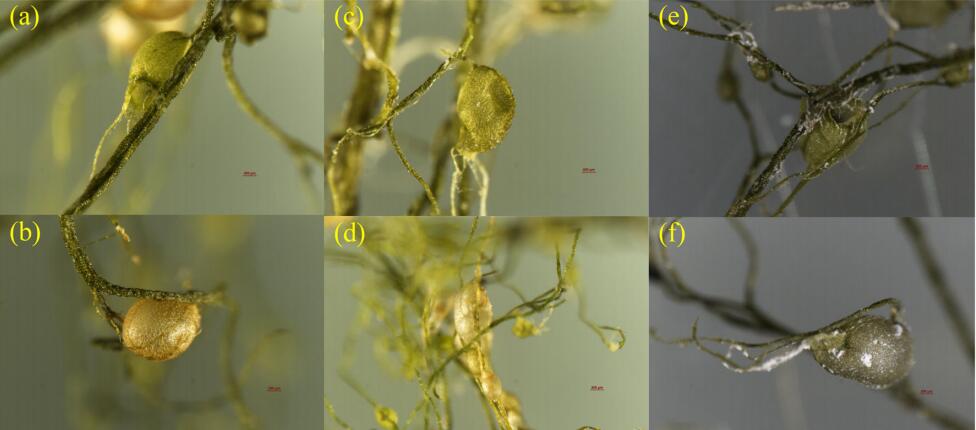
Microplastic particles (particle size<5 mm) have caused severe contamination in global aquatic environments, leading to potential adverse effects on ecosystem services and environmental quality. However, few studies have focused on the impact to macrophytes, which are important aquatic primary producers.
Utricularia genus are rootless macrophytes commonly found in small lakes and ponds. They use bladders to capture prey, which makes them have tremendous potential to interact with microplastic particles in aquatic ecosystems, therefore, increases risk from aquatic environments containing microplastics.
Researchers from the Wuhan Botanical Garden conducted a test in different media to investigate whether the uptake of microplastic affects the growth of Utricularia aurea Lour.
After a 10-day test, with all parameters detected, results showed that U. aurea could take in amount of microplastic from its bladders and also microplastic could adhere to the plant. Pictures were given to see this ingestion. Polyvinyl chloride (PVC), but not polyethylene (PE) particles had negative effects on the growth of U. aurea, which was mainly dependent on particle size.
PVC might induce possible toxicity in these carnivorous macrophytes via intake of particles through the bladder. In addition, these particles adhered to the outside of the bladders, which might also contribute to the inhibition of macrophyte growth.
The results were published on Environmental Science and Pollution Research entitled "Bladder entrance of microplastic likely induces toxic effects in carnivorous macrophyte Utricularia aurea Lour". This study was supported by the National Natural Science Foundation of China.

SEM images of polyethylene (PE) (A) and polyvinyl chloride (PVC) particles (B) (Image by WBG)

Photomicrographs of stems and bladders of U. aurea under different microplastic treatments: (a) bladders and stems in pond water under CK treatment; (b) bladders and stems in distilled water under CK treatment; (c) bladders and stems in pond water under PE treatment; (d) bladders and stems in distilled water under PE treatment; (e) bladders and stems in pond water under PVC treatment; (f) bladders and stems in distilled water under PVC treatment (Image by WBG)

86-10-68597521 (day)
86-10-68597289 (night)

52 Sanlihe Rd., Xicheng District,
Beijing, China (100864)

